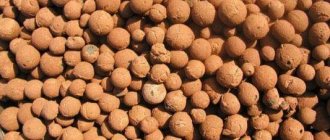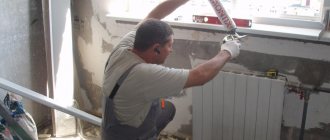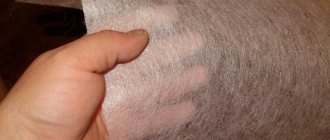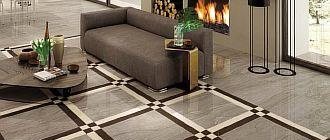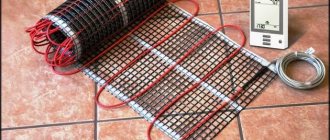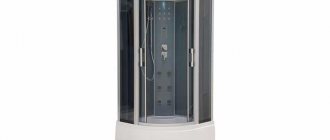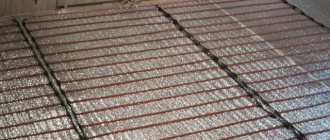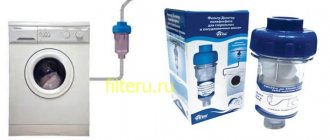When the task is to choose an air heater, the first question that arises is what type of heating device to choose. After answering the first question, the required power of the selected type of device is approximately calculated so that it can heat a room of the corresponding area. Approximately 1 kW per 10 square meters. And finally they make the long-awaited purchase.
But if at first glance all these steps seem unpretentious and simple, then as soon as it comes down to it, many nuances immediately float to the surface. What type of device should I choose? What are the pros and cons of devices of one type or another? Which one will ultimately be better suited to the current conditions? We will try to answer these questions in this article. Namely, let’s compare the two most popular today, and at the same time completely different, types of air heaters - heating element and ceramic.
Dry heating elements: ceramic or tubular? Differences
What a standard dry heating element is is known not only to those who work with heating on an industrial scale, but also to everyone who has even the slightest idea about the operation of a household boiler or washing machine. The development of technological equipment also requires new approaches in the field of heating. On this basis, new heating elements were developed that have increased durability and improved protection. These devices include dry ceramic heating elements consisting of steatite modules. To have an idea of what we are talking about, we suggest considering this topic in more detail.
What is the difference between a standard metal dry heating element and a ceramic heater?
The operating principle of both heaters is not particularly different, but the performance, design and installation method are different.
- Mobility of the heating element. In dry standard electric heating elements, the heating element consists of a copper alloy or corrosion-resistant steel. When vibration occurs during equipment operation, this element can move inside the flask. In a ceramic heater, the heating element is seated tightly and is not affected by vibration during operation. Heat exchange in this case will be carried out at high quality.
- Combined heating device. In a ceramic heating element, the heating element is placed in a ceramic base, which has the property of maintaining temperature for a long time. For this reason, even after disconnecting the heating element from the network, the heater retains the accumulated heat for a long period of time. Thus, energy consumption is saved and thermal energy is retained for a long time.
Features of soapstone
Soapstone is a mineral material of natural origin. It is mined from unprocessed talc ore. In the process of studying steatite, its healing properties were revealed, but scientific researchers were more interested in its heat-storing properties. The heat-preserving properties were originally discovered after the mineral was heated and then placed in cold water, where it remained at its temperature for an hour.
Initially, people used soapstone (ceramics) to create stoves and thermal insulation coatings, using it both in pure form and in mixtures with other elements. Over time, this mineral became widely used in the manufacture of electric heaters.
Heating devices based on soapstone or ceramics are currently used to heat oil, water, plating solutions and are even installed in breweries.
Spiral fan heater
The operation of the device is due to the heating of a spiral of refractory metal wire. It can heat up to 1000ºС, which is quite a fire hazard. But even excluding the risk of fire, we can list many consequences of such a high temperature:
- the fan heater body wears out quickly;
- the wire may burn out in some places;
- When dust and other particles get on the coil, they burn, smoke and create unpleasant odors.
IMPORTANT! Long-term operation of a spiral heater is impossible - the device burns oxygen very quickly.
The dimensions of the device also leave much to be desired, because sufficient power requires a long length of wire. For this reason, one can also note the meager choice among possible designs.
But the price is relatively low, and therefore this fan heater can be affordable to everyone.
Additional benefits
Ceramic can absorb excess heat while protecting the metal heating element and other metal parts that make up the heater. The corrosion processes of metal components in such a heater are much slower compared to standard devices, and the service life is increased.
Thanks to the special shape of the ceramic component of the dry heating element, its beneficial qualities can be used to the maximum, which increases its service life.
To replace a ceramic dry heater, as with a standard one, there is no need to drain the liquid from the container.
Ceramic / soapstone dry electric heaters have proven their practicality only on the positive side. They are able to operate for a long period and, with proper maintenance, provide a uniform supply of heat throughout the heated area. The safety of the generated energy saves already expensive electricity.
order a dry ceramic heating element from “Polymernagrev” by filling out an application on the website or by telephone. All contact information is listed on the website. Delivery is carried out throughout all regions of Russia.
Owner reviews of ceramic fan heaters: advantages and disadvantages
Users especially note the manufacturability and durability of these devices. A ceramic fan heater, according to most owners, is universal. Power and safety allow it to be used even in children's rooms.
After analyzing the published comments, we were able to identify the main pros and cons of the products.
| Advantages | Flaws |
| Manufacturability | Price |
| Efficiency | Long-term access to operating modes |
| Economical | Increased weight |
| Durability | Overheating of objects (close to the device) |
| Safety | |
| Reliability | |
| Environmental friendliness | |
| Versatility | |
| Ease of use | |
| Maintainability |
The opinions of real people can be subjective and fundamentally different from each other. At the same time, statistics show a confident annual increase in sales of this particular type of device. According to official data, the ratio is almost 70 to 30 (ceramics/spiral). The overwhelming majority of buyers insist that spiral heaters remain relevant solely due to their low price.
Which air heater is better: heating element or ceramic?
When choosing an air heater, or just a heater, the first question that arises is what type of heating device to choose. After answering the first question, the required power of the selected type of device is approximately calculated so that it can heat a room of the corresponding area. Approximately 1 kW per 10 square meters. And finally they make the long-awaited purchase.
But if at first glance all these steps seem unpretentious and simple, then as soon as it comes down to it, many nuances immediately float to the surface. How to choose a device? What are the pros and cons of devices of one type or another? Which one will ultimately be better suited to the current conditions? We will try to answer these questions honestly in this article. Namely, let’s compare the two most popular today, and at the same time completely different, types of air heaters - heating element and ceramic.
Heating elements new air heaters
Heating elements are sealed tubes made of heat-resistant material, inside of which there is a spiral powered by electricity.
What is the tube for? So that the open spiral does not cause harm to surrounding objects, so that the dust in the air does not burn too much, and finally, so that the spiral does not burn out so quickly, because oxygen in the air greatly contributes to this.
Heating elements in heaters have a wavy or flat spiral shape, sometimes with fins. But the principle is always the same: the spiral inside the heating element transfers heat to the surface of the heating element, and the surface of the heating element heats the air in the room by convection, or the heat is blown off by a fan, which again helps to warm up the air.
Everything is obvious, it would seem - choose a heater with a heating element of suitable power, place it in the room and enjoy the warmth. You can choose a fan heater with a heating element, then the warm air, heated by the heating element, will blow where needed, and the goal will be achieved - the room will again be filled with warmth. However, not all so simple. The surface area of the heating element is small, and this is where the main pitfall lies.
Although heaters with open heating elements warm up quickly, they do not distribute heat evenly throughout the room. If there is no fan, then the heat will rush vertically upward, and after a few minutes a burning smell will still appear, since dust will still fall on the heating element. In addition, oxygen will be burned out, and eventually the room (or office) will become stuffy.
Thus, the small surface area of the heating element negatively affects the heating process. The air is heated up very locally by volume (only near the surface of the heating element), and, of course, it overheats, which means oxygen is burned out, it becomes stuffy, and the heat does not bring the expected comfort.
Obviously, a heating element is ideal for heating water in a tank, but it is poorly suited for heating air. Liquids inside a volume transfer heat better, while gases (air in particular) transfer heat much worse.
If we are talking about a garage, a small hangar or a warehouse of fireproof materials, where people are not present all the time, then a heating element air heater is suitable. It’s good if the room is equipped with a thermostat, then it will be possible to maintain the air temperature at the required level.
But if we are talking about a room in which people work all the time, if there are fire hazardous materials, or the air humidity is higher than usual, then a heating element heater will not work. We need another solution. Fortunately, these days there are more suitable alternatives.
Fan noise is another disadvantage of the heating element heater. The fan there is always powerful, because it is necessary to blow off the heat from the surface of the heating element of a small area, and this requires significant air pressure. Another thing is if the heating element has fins or a ventilated radiator of good area, then the fan will be quieter. One way or another, due to the presence of noise, such a heater is suitable for noisy rooms, when one of the goals is to save money when purchasing a heating device. The low cost of a heating element air heater is the main advantage of devices of this type.
Metal or ceramic heating element. What's better?
Summer greetings to everyone from Uncle Gena. Today we will try to understand the question - what is better: a ceramic “dry” heating element or a metal “wet” heating element?
Today in our everyday life you can often find a household appliance - a water heater (boiler), which is designed to serve for a long time. But hard and not very clean water can lead to premature failure of the water heater. If this trouble happens, do not despair. After all, most often, to repair it, it is enough to buy a heating element for the boiler and replace it. When buying a water heater, and in the summer, buying a boiler becomes much more relevant, since in our country it is customary to turn off hot water in the summer for maintenance work, you should pay attention to which heating element (heating element) to purchase it with. So, which heating element to choose - dry or wet?
Water heaters for apartments and private houses
What is the difference between a “wet” heating element and a “dry” one - comparative characteristics:
First, let's understand the definitions of these heating elements.
- The principle of operation of a “wet” heating element is easy to explain by comparing it with a large and powerful boiler placed inside a water heater. This type of heating element is also called “open”, “metal” or “copper”. It looks like a copper or stainless steel tube.
- The essence of a “dry” heating element is contained in its name. The stainless steel heating element does not have direct contact with water and is placed in a special durable ceramic flask.
What is a “wet” heating element?
An ordinary metal (“wet”) heating element is a kind of copper or stainless steel tube of a straight or curved shape. The heating element has direct contact with water and its temperature is close to the temperature of the water in the tank. The main advantage of such an element is its low cost, since tanks with a “wet” heating element are much cheaper.
A type of “wet” heating element
The disadvantages include several factors, but their influence is, to put it mildly, controversial. One of them is the need to completely drain the water from the tank if the heating element needs to be replaced. Another disadvantage is the risk of breakdown and, accordingly, electric shock. Well, the third factor is the formation of scale on the walls of the heating element. Regarding scale, we can say the following - its amount does not depend on what heating element is used in the tank. The water heater needs to be cleaned every year, and for this it is necessary to completely drain the water and wash both the tank and the heating element. As for breakdown and electric shock, we conducted a survey with our clients and it turned out that no one had ever dealt with such a case. In fact, if you imagine such a situation, then electric shock will look like an unpleasant pinching sensation.
What is a “dry” heating element?
The term “dry” heating element refers to the technology of heating water in water heaters and other water heating devices, where the heating element itself (TEN) is not in direct contact with water, but is located in a sealed casing. It could be a ceramic flask, or metal air-filled tubes, but the essence is the same - heat is transferred to the water through an intermediary (casing). This leads to the fact that the temperature of the water near the heating casing is much lower than the temperature of the heating element, as a result of which scale is formed in much smaller quantities.
A type of “dry” heating element
It is for this reason that the service life of heating elements is much longer than that of traditional heating elements. And if a submersible heating element can work for 2-5 years, then heating elements made with “dry” heating element technology work up to 10 years. Of course, with a stable voltage and good operating conditions.
But sooner or later, even such heating elements exhaust their service life. And here the second advantage of the “dry” heating element technology is revealed. This is the ability to replace the heating element without emptying the tank itself. In other words, you can unscrew the heating element from the flange and go to a service center to replace it. In this case, your water heater will remain filled with water; of course, it will not heat, but you will not have to drain the entire volume of water.
Gorenje went even further. They came up with a very interesting commercial move. Some models of water heaters (GBFU, GBU, GBFU-E, GBFU-EDD, OGB-SEDD, GBFU Simliciti) have not one, but two “dry” heating elements. The total power of which is 2 kW, i.e. each heating element is 1 kW. And while you went to the service center for a new heating element, the second one with a power of 1 kW heats your water. The heating time doubles, but you will not be left without hot water.
The technology of “dry” heating elements was developed in the mid-90s. The French company Atlantic is considered the founder of this technology; almost immediately the AEG company bought a license to use this innovation and successfully used it in some models of its boilers. After the purchase of the AEG company by the Stiebel Eltron concern, the license was lost, so at the moment boilers with a “dry” heating element are not produced under this brand. Over time, the license was also acquired by Electrolux and Gorenje. At the same time, Electrolux eventually moved the production of water heaters to China.
“Dry” heating element for Electrolux and Gorenje water heaters
Features of the “wet” heating element:
Pros:
— high speed of water heating; — affordability; — versatility (suitable for different models of water heaters).
Minuses:
— susceptibility to scale formation; — danger of electric shock in case of leakage; - must be cleaned and replaced periodically; - higher energy consumption.
Features of the “dry” heating element:
Pros:
— ease of maintenance; - economical operation; — long service life and warranty (3 times longer than “wet” analogues); — easy repairs; — fast heating of water; — no need to drain water when replacing; — minimal risk of electric shock; — compact dimensions; — the presence of two heating elements in one boiler; — thermal protection during dry start; - no air pockets.
Minuses:
— exclusivity (suitable for a specific boiler model); — high cost of the element and service; - It is necessary to periodically clean and replace the element.
Composition of a boiler with a “dry” heating element
The pros and cons of both types of elements are obvious. It is clear that the “dry” type of heating elements has significantly more advantages. They are both reliable and economical. Of course, they are more expensive than their “wet” counterparts. The latter are cheaper at the start, but they also break down more often. The main reason for their problems is direct contact with water and, as a result, the rapid formation of scale.
Heat ceramic guns: features, review of models, selection criteria
- Peculiarities
- Types and models
- How to choose?
Heat ceramic guns are well known to consumers and are in stable demand. Unlike other heating devices, such models have high efficiency and can heat fairly large areas. This significantly expands their scope of application and allows them to be used not only for professional needs, but also at home.
Peculiarities
A heat gun is an electric heating device designed to quickly heat a room or effectively dry various elements during construction and finishing work. Like an artillery cannon, the device “shoots” hot air, which comes out of the grille under high pressure. The guns are powered from a 220 V mains voltage, and ceramic plates act as a heating element, with a total power of up to 3 kW or more. The models are equipped with a durable metal case that can withstand quite serious mechanical loads and is not subject to corrosion, and a powerful fan located at the rear of the device.
To protect the unit from overheating, many models have a thermostat, and more advanced models are equipped with an air filtration system.
The operating principle of a heat gun with a ceramic heater is quite simple and consists of the following: a fan captures air masses and delivers them to the heated element. The flows instantly absorb the generated heat and release it into the room. This continues until the thermostat turns off the device. More expensive units are often equipped with adjustable blinds located on the front side of the body and designed to adjust the direction of air flow. In addition, most samples have two modes - winter and summer, and are equipped with special switches.
There are also special models - so-called blast protection guns, capable of operating in conditions of high humidity.
The main difference between a ceramic heating element and a conventional heating element is the fact that instead of a tube or spiral, it is represented by several ceramic plates combined into a monolithic heating structure. As a result, contact between air and the heat source occurs over a much larger area than in heating element models, where air masses are heated directly near the heating element tube. In terms of the surface temperature of the heating element, such models are slightly inferior to heating element samples, but they undoubtedly benefit in the contact area of the air masses and the heating surface.
High consumer demand for ceramic models is due to a number of their undeniable advantages over other designs.
- Compared to conventional spiral heaters, ceramics do not burn oxygen, do not cause stuffiness in the room and retain the natural freshness of the heated air masses.
- Ceramic appliances can be used for as long as desired without the threat of overheating or fire.
- Compared to a heating element gun, the ceramic model is light in weight and has modest dimensions, which greatly facilitates its operation, transportation and storage.
- Guns with a ceramic element produce very little noise and can be used in residential areas.
The only drawback of the devices is the need to connect them to the electrical network and, as a result, the impossibility of using them in field conditions.
The scope of application of thermal ceramic guns is quite wide. They are used for heating greenhouses, country and country houses, garages, trade pavilions, hangars and warehouses, as well as for drying various surfaces during construction work.
Types and models
Classification of heat guns with a ceramic heater is made according to such criteria as the shape of the body, the speed of supply of air masses and the power of the thermal element. In addition, devices are portable and stationary . The former are used for heating cottages, garages, hangars and construction sheds. Such devices are light in weight, easily transported from place to place and have a power of 1 to 3 or more kW. Stationary units have higher power, are less economical and are used for heating large spaces. The modern market offers a large selection of ceramic heat guns.
Below are the most popular samples that rank first in popularity ratings according to online stores.
- The Russian-made Ballu-5 with a power of 3 kW is capable of heating a room of up to 30 m2. The device operates on a voltage of 220 V, air flow is 250 m3/h, weight is 3 kg. The unit has a thermostat, is available in dimensions of 20.5x20.5x19.5 cm, is equipped with a thermostat and is capable of operating in two power modes. The cost of the model is 3190 rubles.
- The Russian heat gun KEV-2S51E is designed for heating rooms up to 20 m2 and has a power of 2 kW. The air consumption of the device is 100 m3/h, voltage 220 V, weight 3 kg. The unit is produced in dimensions of 19.7x19.7x20.5 cm, has a one-year warranty and costs 2290 rubles.
- The budget electric gun of the Russian brand Oasis TPK-20 is produced in China, has a power of 2 kW and is designed to heat rooms up to 20 m2. Air consumption is 150 m3/h, voltage 220 V, weight 2 kg. The device is produced in dimensions of 15.4x17.3x8.8 cm and costs 1954 rubles.
How to choose?
The main selection criterion when purchasing a ceramic heat gun is the power indicator of the device . So, if you plan to heat a room with an area of no more than 10 m2, then a model with a power of 1-1.3 kW will be sufficient. If the area of the room is more than 20 square meters, then the power of the gun should be higher than 2 kW.
In addition, if the unit is purchased for a residential premises, then it is better to choose models equipped with a thermostat and thermostat.
Such units heat the room to a set temperature and then turn off. This increases the ease of use of the device and its safety.
How to choose an electric heat gun?
Do you need to dry out your garage, box, basement or fresh suspended ceiling? A heat gun is best for this. Which one to choose for your home and garden? We will tell you what to look for when choosing.
Heat guns are great for drying damp rooms, such as a repair box, garage and cellar. Network-powered devices have many advantages over diesel and gas ones. How to choose an electric heat gun for your dacha? We will tell you what nuances you should pay attention to when choosing and recommend a couple of excellent models.
Water fan heater: advantages
Heat guns are an effective and inexpensive way to quickly warm up the air in residential and non-residential premises.
They are suitable for heating a house, cottage, garage, or drying out a cellar. More powerful units are used in industrial warehouses and in agriculture. To choose the right heater that can maintain a comfortable temperature in the room, you need to take into account many factors: insulation, area, ability to connect to a particular power source. To help you make the right choice, we have written a detailed review of each type of heat gun.
Working principle and advantages of electrical power
The principle of operation of electric guns is similar to a conventional hair dryer: the fan ( 2 ) captures cold air ( 3 ) from the room and supplies it to the heater ( 7 ). Passing through the heater, the air is heated and blown ( 5 ) back into the room. The heater can be a regular open-type spiral, a heating element or a ceramic plate.
Compared to gas and diesel units, electric ones have many advantages.
Firstly , they can work almost continuously, since electricity is supplied uninterruptedly, while fuel reserves for diesel and gas engines need to be constantly replenished.
Secondly , the electric gun does not emit exhaust or gases into the atmosphere, so it can be used indoors.
Thirdly , electric models are less noisy than diesel and gas ones (although the noise during operation is still noticeable). Which heat gun to choose for the garage? If there is light in it, then it is definitely electric; otherwise, for gas or diesel, you will have to additionally make a ventilation system.
Electric guns are less powerful (although rare units can be as powerful as 100 kW) than other types and depend on the availability of an electrical grid, so they are practically impossible to use for heating outdoor areas. However, at home there is rarely a need to use a heat gun in an open space.
Diesel heat guns
Diesel heat guns are devices for economical heating of non-residential buildings. They run on diesel fuel, so the areas where they are used must be well ventilated. Diesel heaters are widely used in construction for drying concrete screeds and facades. If the equipment does not have a chimney, then it can be used in industrial premises and open areas.
Operating principle of a diesel gun:
- fuel flows from the tank to the filter, where heating occurs;
- combustion occurs from the spark plug;
- the fan draws cold air into the tank, where it is heated;
- the protective structure delays the flame;
- heated air rushes in a given direction.
An indirect fired gun works the same way, but combustion products are removed through a chimney.
Advantages of diesel heaters:
- good operational parameters and characteristics;
- ease of operation;
- efficiently consumes liquid fuel;
- functions perfectly even at low temperatures;
- the best option for heating large rooms.
Flaws:
- make a lot of noise;
- constant fuel control;
- expensive unit.
Direct heating
Direct fired diesel heat guns produce smoke and odor. They are used for heating premises under construction, warehouses or garages. This type is not used in residential areas.
Profteplo DK-14PK orange is a popular option. It heats rooms perfectly and is used for drying putty, plaster and walls. It features a convenient refueling system and fuel level monitoring.
The model of the Italian brand Ballu Biemmedue GE 20 is suitable for industrial and utility rooms, drying and heating of large equipment. Reliable and durable heater, as it is made of high quality steel.
What power should the gun be?
How to choose the right heat gun for your home based on power? Power affects the size of the room the device can heat and for how long. There are average power calculations for the heated area. Typically, for rooms with a ceiling height of 2.5 m, the following ratio of power and area is taken: 100 W of thermal power is required per 1 m2. For example, if you need to heat a garage with an area of 15 m2, you need to choose a heat gun with a power of at least 1.5 kW.
If you need to warm up a box with high ceilings, then it is better to calculate the power based on the volume/power ratio: 2.5 m 3 = 100 W. For example, you need to heat a box with an area of 30 m2 with a ceiling height of 4 m. Then you will need a device with a capacity of: 4 * 30 * 100 / 2.5 = 4.8 kW. So, you can take the Resanta TEPK-5000K with a power of 5 kW. You should not take power “for future use”, because the higher it is, the more expensive the device.
Which heat gun to choose for suspended ceilings? In order for the film to lay clearly on the ceiling without sagging or stretching, it is necessary to warm it evenly to 60° C. A device of 3 - 5 kW is suitable for a living room, bathroom or bedroom. For unheated new buildings, it is better to take a gun up to 10 kW.
Which heating element in electric heat guns is the most effective?
How to choose a heat gun for your dacha based on the type of heating element? There are three types of heating elements, each of which has its own advantages and disadvantages:
- Spiral.
- heating element.
- Ceramic plate.
Which of the three heaters should I buy a device with? If your budget is limited, but you need a good gun, take it with a heating element - it doesn’t scorch dust and heats well. For example, you can buy BISON ZTP-M1-3000 with a power of 3 kW. If the issue of price is not so pressing, pay attention to models with a ceramic heater - the best efficiency without side effects. We do not recommend using it with an open spiral.
Gas heat guns
Gas heaters are used as a permanent or temporary heat source. They are capable of heating large volumes in a short time. They are mainly used for heating greenhouses, warehouses, and hangars.
How does a gas gun work:
- the gas enters the burner, which is located in the combustion chamber;
- the fuel is ignited, the heat exchanger warms up;
- the fan draws in cold air and returns it through a heated heat exchanger;
- The thermostat protects equipment from overheating;
- the gun stops working when the air in the room warms up to the specified temperature, but when it drops, the device turns on again.
Depending on the type of fuel, gas heat guns come in two types:
- On liquefied gas (propane or butane). It is important to pay attention to gas consumption in order to understand how many hours one cylinder will last.
- On natural gas - the device can be connected directly to the gas main. The second type works on any type of gas, thanks to the built-in pressure stabilizer.
The best gas heat guns
Master (Italy)
- The Master BLP 17 M heater is used in well-ventilated rooms or in open areas. The fuel used is propane-butane. It features smokeless combustion and no odor.
- The Master BLP 33M model is designed for efficient heating of large and small rooms. It is possible to connect to several cylinders at once.
- The gas heater Master BLP 53 E provides heating of large ventilated rooms. There is an adjustment of thermal power. The device is used in greenhouses, conservatories and other facilities where it is important to maintain a certain temperature.
Ballu (Russia)
- BHG-10 will help you quickly warm up your garage. Used for rapid temperature increase, zone heating, drying.
- BHG-20M. Suitable for use in industrial premises. AISI stainless steel with increased resistance to high temperatures is used to manufacture the heat exchanger.
- The professional heater Ballu BHG-85 quickly warms up the room. Can work locally. Can be used in high humidity conditions.
Additional functions and capabilities of heat guns
Electric heat guns can be equipped with additional functions and capabilities that can significantly influence the choice of a specific model:
- Temperature adjustment . This function will allow you to adjust the operation of the device to certain conditions. For example, a stretch ceiling requires a certain temperature and overheating is undesirable.
- Power adjustment . Changing the power affects the blowing force of the fan: the higher the power, the stronger the fan will blow.
- Thermostat . The thermostat maintains the set temperature at the desired level and turns on the device when it drops, and vice versa turns it off when the room has warmed up to the desired temperature. Although the vast majority of heat guns are equipped with a thermostat, there are still models without this structural part.
- Ventilation without heating . This function allows you to start the fan without turning on the heating element. This may be necessary when the air is warm enough and the room needs to be dried. For example, this is necessary during finishing work, such as plastering.
- Overheat protection . The device will automatically turn off when the critical temperature is reached (each model has its own critical temperature threshold). This is especially useful in cases where it is impossible to control the operation of the unit.
- Engine shutdown delay . In models with this function, the heating element is first turned off, and the fan continues to spin for some time. Typically this time is 1 – 2 minutes. During this time, residual heat is dispersed throughout the room, and the heating element cools down faster. Relatively few models are equipped with this function. Of the good ones, we would like to recommend Ballu BHP-P-5 .
The best and most famous models: characteristics and prices
"Resanta TVK-2"
This is a practical, compact and very convenient form factor, which makes this model one of the best household ceramic fan heaters in its class. Key Features:
- the handle is moved outside the body (easy to carry);
- simplified control - rotary “relays” (knobs);
- presence of modes - fan, high and low power (1000 W/2000 W);
- The thermostat automatically turns off the power according to user settings;
- the rotating body accelerates the spread of warm currents;
- attractive design design - smooth lines, combination of black and gray shades.
To get started, select the power mode and set the thermostat knob to maximum. After reaching the desired temperature in the room, this regulator rotates in the opposite direction until a characteristic click is heard. In this mode, heating will automatically turn off, which will reduce consumption, eliminate the risk of overheating and maintain a comfortable room temperature. Recommended heating area 20 m².
Review of Resanta fan heaters Reliability and safety through simple technologies
Ballu BFH/C-31
The stylish ceramic fan heater is presented in a glossy casing in two shades - light and darker gray. The rounded handle is located at the top, it is placed outside the structure. This modification is compact, mobile and easy to use. Spectacular exclusive design (hi-tech, Slim) and innovative heating technology make Ballu fan heaters suitable for both residential and office interiors.
Features:
- The control panel is located at the top and is represented by one knob.
- There are two modes of power and ventilation without heating.
- An accurate thermostat is provided to protect against overheating. It works automatically.
- Silent operation is achieved thanks to a well-designed design.
- Heat Protect technology (push button at the bottom of the case) ensures safe operation. This is a power outage when the grille is blocked, falls and other emergency situations.
- Innovative Rich Oxygen technology does not dry out the indoor air.
- The height of the structure is only 30 cm.
- Management similar to the previous version.
The devices are certified for safety and environmental friendliness. The manufacturer's warranty period is 2 years. Consumers note the only drawback - the declared power. In reality, this is less than 20 m² (optimal area 15-17 m²).
Electrolux EFH/C-5115
The design is presented in modern creative ART design. The aerodynamically shaped body promotes the accelerated spread of warm air flows (intensive circulation). Control elements (knobs) are created using Soft-touch technology - maximum comfort. And the three-blade fan operates almost silently. Recommended heating area 20 m² – power 2,000 W.
The devices are made of heat-resistant, impact-resistant plastic that is impervious to deformation. The level of dust and moisture protection is standardized according to class IP 20. A ventilation mode is provided. As well as protection against falls and overheating. “Mechanical control” is similar to RESANTA TVK-2. The main elements and assembly, according to consumers, are characterized by high European quality (reliability), which is felt intuitively.
Review of Electrolux fan heaters The user rating was 4.9. The share of manufacturing defects is reduced to “0” (0.1%).
VITEK VT-1759
This is a ceramic fan heater with a power of 1,500 W for an area of 15 m². Stylish design and compactness make the device as versatile, economical and practical as possible. The color scheme is a combination of light silver-gray gloss and matte black (cellular format lattice). The design is characterized by simplicity, smooth lines and elegance.
The control panel is represented by one rotating knob, located on the so-called “belt” in the lower part of the case. There is a fan mode, protection against overheating and tipping over. The thermostat operates automatically.
Ballu BFH/C-29
First of all, this design is distinguished by its unusual appearance. This is a “monolithic body” of light gray silver color (almost white gloss) with an all-metal dark grille. According to buyers, there is an external resemblance to an acoustic speaker.
The control panel is represented by one rotating switch (twist) at the bottom of the front panel. Overall dimensions: 16 cm – width and 24.5 cm – height. Despite its compactness, the power of the device is 1,500 W for an area of 17-20 m², as stated by the manufacturer. While analogues “stretch” no more than 15 m², which makes the performance indicators of this model a record in the class.
There is also a ventilation mode, protection against overheating and falling (represented by a push button at the bottom of the case). And two heating modes at 750 W and 1,500 W. The thermostat will turn off the heating element automatically when the optimal room temperature is reached. In short, this is a stylish compact fan heater with excellent user characteristics, simplified controls and a well-thought-out security system.
Timberk TFH T15XCZ
A distinctive feature of this modification is its unusual design, made in the form of a triangle with clear edges and rounded corners. The control is represented by one rotating relay, which is located on the right side plane. There are two power levels (750 W and 1,500 W for an area of 15 m²). Protection against overheating and falling is provided by a thermostat (triggered automatically) and sensors. The weight of the device is only 1 kg.
Zanussi ZFH/C-408
The entire range of fan heaters of this brand is produced in a fantastic futuristic design. This version is presented in the shape of a cube with thin side edges. The body is designed in two shades of gray – dark and light. The color scheme adds presentability and aesthetics (disguises dirt). Unlike analogues, the control panel, although represented by mechanical relays, is located on the back side (at the top), creating the effect of a “monolithic” design.
The power of the device is 1,500 W, divided into two modes (half and maximum). The heating area declared by the manufacturer was 20 m². There is a protection system against overheating and falling. The ceramic heating element and Rich Oxygen technology significantly reduce oxygen combustion.
Scarlett SC-FH53K03
What makes this model stand out is its original design – stylization of a retro “audio system”. The design has a regular rectangular shape and is presented in black. It rotates 90°. The handle (quite large) is located above the body.
The front side of the device is made in the form of a cellular profile grid. Fan heater power – 1,500 W. There are two heating modes: 750 W and 1,500 W. And also ventilation without heating. The thermostat operates automatically. The protection system is a fuse.
"Resanta TVK-3"
This is one of the best ceramic household fan heaters, recognized for its design, technology and impressive potential. Important characteristics users include:
- rotating body;
- unusual control panel - LED display with mechanical buttons;
- two operating modes – fan and heating (1,000 W and 2,000 W);
- presence of a remote control;
- the ability to manually set the timer (1-12 hours in 1 hour increments) and temperature (from +15 to +35°C.);
- type of construction – floor-standing, high and narrow.
The presentable case fits perfectly into any interior concept. It is made in a noble range - a combination of black and silver-gray (matte). Control panel black gloss. The toggle-type power button is located on the bottom rear side. For ease of movement, a handle is provided.
The best 3 kW electric heat guns
Wester TB-3000
This heat gun is designed for drying rooms up to 30 m2. It copes with its task with a bang. The maximum air exchange at a power of 3 kW is 300 m 3 / h. The device is equipped with a thermostat that turns the device off and on according to preset parameters. Thanks to this, you don’t need to stand over the gun and control whether it’s on/off. When the critical temperature is reached, the device will automatically turn off to avoid engine damage.
The device is equipped with two regulators: power and temperature. Using the first, the power of the fan is set, and using the second, the temperature of the heating element. Thanks to such functions, you can accurately adjust the operation of the device to certain room temperature conditions. If desired, you can turn on the fan to dry without heating the heating element.
Quattro Elementi QE-3000C
In this heat gun, the heating element acts as a heating element. It quickly heats a cold room to the desired temperature. The fan here is slightly weaker than the previous model, and its maximum air exchange is about 260 m 3 /h. However, its room heating speed is also excellent. Users note that the device operates quietly and vibration is practically not felt.
As with all devices in this price category, a thermostat is installed here to regulate the on/off of the device without operator intervention. Additionally, you can adjust the power of the device and the temperature of the heating element. The only drawback is the impossibility of installing the gun vertically upward (the limiter does not allow it), which could be useful when installing a stretch ceiling. Otherwise, the device performs its assigned tasks.
Timberk TIH Q2 3M
The heat gun is equipped with a 3 kW motor. It promotes maximum fan acceleration and a corresponding air exchange of 310 m 3 /h. The heating element here is a tubular heating element. The temperature is adjusted using a rotary switch. Thanks to this, you can step-by-step adjust the heating temperature for a specific room. Maintaining the desired temperature is carried out by a sensitive thermostat.
Prices: summary table
Devices should be purchased from official representative offices in Russia. This will eliminate the risks of counterfeiting, ensure product quality (no damage, guarantees) and transparent pricing (no markups).
The data in the table is provided for reference only and may vary from supplier to supplier. Prices are taken from the websites of official distributors.
| Model | Power | Design features (equipment) | Protection system | Price in rub. (office dealer) |
| "RESANTA TVK-2" | 2,000 W | Rotary body | Double protection against overheating and falls | 1 630 |
| Ballu BFH/C-31 | 1,500 W | One regulator | Double – from overheating and falls (push button) Heat Protect and Rich Oxygen technology | 1 750 |
| Electrolux EFH/C-5115 | 2,000 W | ART design Aerodynamic body Two regulators | Double protection against overheating and falls | 2350/2190 (black version) |
| VITEK VT-1759 | 1,500 W | One regulator | Double protection against overheating and falls | Discontinued price from dealers from 1458-1759 |
| Ballu BFH/C-29 | 1,500 W | One regulator Heating area 20 m² | Double – from overheating and falls (push button) | 1 750 |
| Timberk TFH T15XCZ | 1,500 W | One Regulator Shape | Double protection against overheating and falls Rich Oxygen Technology | 1 449 |
| Zanussi ZFH/C-408 | 1,500 W | Two gear relays Heating area 20 m² | Double protection against overheating and falls | 1 590 |
| Scarlett SC-FH53K03 | 1,500 W | Retro design Swivel body | Double protection against overheating and falls | 1 899 |
| "RESANTA TVK-3" | 2,000 W | Floor-standing Control panel - LED display Remote control Timer Temperature adjustment Rotatable housing Toggle-type power button | Double protection against overheating and falls | 4 110 |
All models of ceramic fan heaters have LED indicators that notify the user about the operating mode of the device (heating or passive). They are produced according to international standards and environmental regulations. This also concerns safety for human health.
What is a heating element and what can it be like?
First, you need to figure out what exactly a heating element of a washing machine is. Essentially, this is a boiler built into the appliance, which is responsible for heating the water during washing.
Heating elements can vary in:
- Power. The higher it is, the faster the water heats up, but also the greater the electricity consumption, so the principle “the more the better” is not entirely fair.
- Form. Outdated models can be in the form of a spiral, like the previously mentioned refrigerator, and modern heating elements are produced in the form of the letters U or W. This does not have any effect on the technical properties of the device.
- Method of fastening. Another unimportant parameter, and if you are not going to replace the element manually, you won’t even notice it.
- Protection systems. Modern models are equipped with protection against overheating and short circuit, which extends their service life several times.
What about the material? - you ask. In fact, all heating elements are made of the same alloys, and ceramics are just an external coating. And it is about the myths associated with it that we will now talk.
Comparison of characteristics
You can compare types of heaters according to several parameters at once:
- Ergonomics. Based on this feature, ceramic fan heaters definitely win. Today, there are a wide variety of models on the market, making it possible to purchase a device to suit your taste. At the same time, spiral devices do not have a rich assortment and, most importantly, convenient compact sizes.
- Maximum heating element temperature. Wire heats up faster and several times stronger than ceramics. This fact indicates the possible fire hazard of spiral fan heaters and the relative safety of ceramic ones. If the device is accidentally dropped (in the absence of shutdown sensors), the latter are less likely to cause a fire. Also, do not forget that the porous structure of the ceramic plate allows you to retain heat longer, which contributes to its soft distribution throughout the room.
- Ease of use. Metal at high temperatures literally attracts dust and other small particles suspended in the air. Because of this, when the spiral device is operating, the room is quickly filled with unpleasant odors. Ceramics do not create such problems.
- Price. All of the above advantages lead to the high cost of ceramic heat fans. Compared to them, spiral ones look like a more budget option.
Truth and lies about ceramic heating elements
What is a ceramic heating element in a washing machine? This is the most common heating element, coated on the outside with a thin layer of synthetic resin with ceramic dust. Manufacturers of washing machines with such elements claim that such spraying solves the main problem of such equipment - the accumulation of limescale and overheating of the heating element as a result. In addition, attention is often focused on the fact that a ceramic heater heats water faster. There is some truth in this, but.
In fact, hard water deposits actually form more slowly on a smooth ceramic surface than on an uncoated heater. But at the same time, ceramics react very poorly to fabric softeners, bleaches and other aggressive household chemicals. Therefore, when washed exclusively with washing powder, a ceramic heating element can actually last longer than a regular heating element, but with regular use of Calgon and other products, there will be practically no difference.
In addition, ceramics attract small lint from clothing, which inevitably seeps through any filters. After some time, the heating element becomes overgrown with threads, which reduce its heat transfer and lead to overheating. The solution to this problem is a special bag for washing faded items. Otherwise, the machine will have to be disassembled every few years to clean the heating element, and this is a very labor-intensive and difficult process.
Does a ceramic heating element really heat up the water in a washing machine faster than a regular one? Yes, due to the fact that there really is almost no accumulation of lime on it, which slows down the heat transfer in stainless steel heating elements. But here it should be taken into account that not the entire part is covered with ceramics; the flange through which it is connected to the washing machine still remains bare, and lime accumulates on it.
From all of the above, it follows that washing machines with ceramic heating elements can last longer, but you shouldn’t expect miracles of durability from them, especially if you often use aggressive household chemicals when washing.
How do ceramics differ from other materials?
Based on the type of heating element, fan heaters are divided into spiral (nichrome spiral), heating element (tubular electric heater) and with a ceramic heating element.
In the latter case, it is a combination of metal and ceramics. This heating element is called closed. The design is a flat spiral, covered over the entire area with a glass-ceramic layer for safe operation. It is often produced from a powder mixture using the pressing method, followed by annealing in high-temperature furnaces. Current-carrying wires (soldered with high-temperature solder) are connected to the contact pads, providing power supply and heating.
Typical heating element of a ceramic fan heater.
The design resembles a register in appearance. Air circulates through its openings using a fan (cold air is drawn in and hot air is pushed out), which increases the temperature in the room.
Ceramic fan heaters have a number of advantages that have brought them justifiable popularity:
- they do not burn oxygen as intensively and practically do not dry out the air in the room;
- are energy efficient;
- characterized by safety.
Despite the fact that the concept of “oxygen burning” is considered a myth, research and experiments have proven the opposite. The ceramic fan heater dries the air several times less, which makes the microclimate comfortable. Measurements of oxygen levels (in a closed space) showed a higher “concentration” of oxygen in a room with a ceramic heater. In addition, dust on the plates does not ignite, so there is no unpleasant odor when the devices are operating, and the risk of fire is minimized.
The heating area in a ceramic fan heater is larger. It takes longer to reach operating mode compared to the spiral one. However, it demonstrates increased efficiency against the backdrop of economical consumption. The ceramic element is characterized by heat capacity and heat conservation, so it turns on less often (in thermostat mode), which explains the reduced energy consumption.
The ceramic shell serves as an excellent:
- dielectric;
- heat conductor;
- storage device and emitter (infrared) in the mid-wave range 3-10 microns.
It is invisible to the human eye. However, it is considered pleasant (as perceived by receptors) and has a positive effect on the body. This radiation also warms up surrounding objects, which subsequently release the resulting heat, which adds to the efficiency and efficiency of the devices.
How to extend the service life of the heating element
If you do not want to have your washing machine repaired too often, then you should adhere to the following recommendations:
- Don't boil water unnecessarily. In boiled water, deposits harmful to heating elements form much more often than in cold or warm water. Therefore, every boiling is a blow to the durability of the equipment.
- Use a laundry bag. It will prevent threads and small fibers from sticking to the heating element.
- Soften hard water. Using special softeners, you will significantly slow down the formation of limescale on the part of the heating element that is not covered with ceramics.
- Install the magnetic filter. This is a special device that is mounted on the filler pipe and attracts heavy elements. It is more effective than a softener and is completely safe for all elements of the washing machine and all types of fabric, unlike chemicals.
- Use citric acid to clean the machine. It effectively removes scale and dirt, but it is very important to maintain the correct proportions.
Most manufacturers advise changing the heating element in a washing machine every ten years maximum. If you follow all operating rules, then your equipment will be able to last that long and even a little longer without malfunctions.

